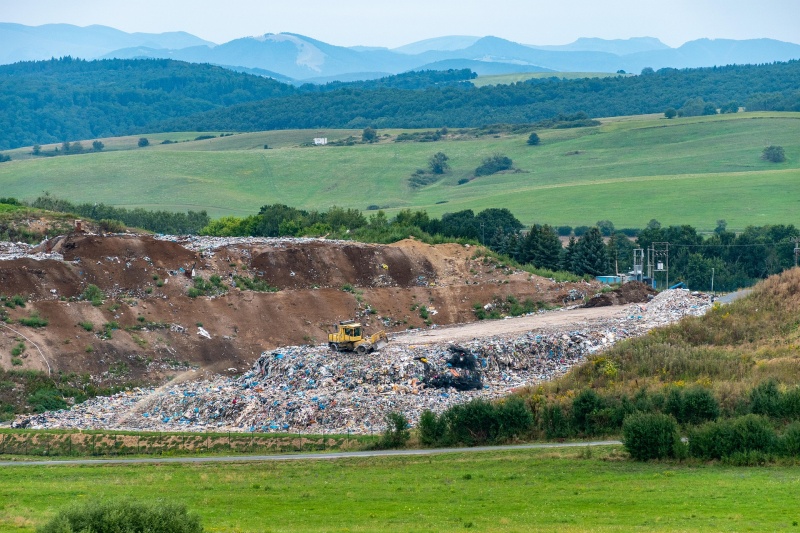ESA outlines vision for UK circular economy by 2040
Trade body representing waste management companies presents a five-pronged framework to reduce waste, maximise recyclability, increase participation, improve infrastructure, and prevent crime.
 The Environmental Services Association (ESA) has set out a vision to achieve a circular economy in the UK by 2040.
The Environmental Services Association (ESA) has set out a vision to achieve a circular economy in the UK by 2040.
With the right policy conditions in place, ESA members say they will commit to investing £15 billion in circular economy infrastructure over the next decade. This investment is projected to create 40,000 jobs across Britain in activities such as re-use, repair, and material reprocessing.
Under the ESA’s vision, the organisation suggests that the current linear economy and disposal of residual waste to landfill will be “consigned to the past” by 2040 with the majority of discarded materials returned to economic use in a closed loop.
Its two stated goals are to double resource-productivity against the national baseline, and to eliminate all avoidable waste. It also expects the average recycling rate for municipal solid waste to reach 75 per cent, representing a 10 million tonne increase on current recycling volumes.
The ESA’s hope for the sector expands across all types of waste, with notable aims including the widespread reuse of products and packaging, the reduction of carbon emissions in the sector, policy and market support for domestic reprocessing, and the almost entire elimination of landfills.
To achieve this, the organisation has presented its strategy as five interlocking interventions, which "must be carefully joined together to form a complete picture of a circular economy by 2040."
Reducing waste arisings
The first intervention focuses on reducing raw material extraction through better use of resources, with four key strategies highlighted as essential to achieving this goal:
- Changing consumption patterns: Government-led communications and interventions that include advocating for rental over ownership, encourage buying second-hand, and reinforcing social norms around sustainable consumption
- Designing out waste: extending Extended Producer Responsibility (EPR) schemes beyond packaging to include textiles, waste electrical and electronic equipment (WEEE), and absorbent hygiene products
- Encouraging reuse: making reuse a standard in local service contracts and creating universal access to Reuse Hubs and local repair networks
- Material switching: Using EPR fee modulation to incentivise producers to switch from materials perceived as eco-friendly but with greater lifecycle impacts to those that are genuinely more sustainable
Whilst the report acknowledges that affordability, time constraints, and consumer behaviour may challenge the implementation of these strategies, it also points out the economic potential, with reuse activities alone estimated to generate around £63 million in annual sales revenue.
However, recent warnings have been levied by reuse charities, asking for greater investment in the sector following a decrease in the number of items being donated.
Maximising recyclability of unavoidable waste
The second intervention ensures that all materials placed on the market have circular economy solutions. The ESA defines this as "meeting a clear end-of-waste specification as a commodity, construction material or low-carbon fuel with a viable end market."
The organisation calls for formal End-of-Waste standards for all waste materials, establishing clear points where waste-derived materials become secondary raw materials, with an aim to have consulted on, formalised, and put into effect a position by 2030.
Increasing participation across the value chain
"A circular economy will only be achieved if all actors across the value chain participate in synchronicity. If one part of the value chain fails, the loop is broken," the ESA states.
The foundation for this, according to the organisation, lies in implementing consistent services through the Collection and Packaging Reforms, including Simpler Recycling from March 2026 and modulated EPR fees from April 2026.
The ESA outlines a four-step communications approach: simplified standardised core messaging, raising awareness through mutli-channel strategies, tailored local communications to address demographic challenges, and interactive refinement using advanced product tagging and AI-based monitoring.
To prevent performance levelling off, the association recommends Welsh-style statutory targets for recycling and reuse, with local authorities obligated to meet targets. Enhanced enforcement tools should include fixed penalty notices for repeat offenders who ignore waste separation requirements.
Improving recycling and waste treatment processes
The ESA has set a target to reduce process losses to no more than 10 per cent by 2040, with its fourth intervention focusing on maximising material value through improved processing.
"By 2040, the material collected for recycling will be sorted more effectively than it is today. The next generation of sorting facilities will embed artificial intelligence (AI), computer vision and robotic sorting infrastructure by design," the document states.
The association calls for virtually eliminating waste to landfill, recommending a ban on sending combustible waste to landfill and expanding the definition of ‘biodegradable’ waste to cover all combustible waste.
Defra is currently developing its policy on eliminating biodegradable waste from landfill, following a consultation with waste management businesses, local authorities, and industry bodies.
Energy-from-Waste facilities will continue playing a vital role, enhanced by carbon capture and storage. "When accompanied by CCS technologies, EfW facilities could also offer carbon removals," the ESA notes, projecting potential contributions of around 1.25Mt CO2e per year in negative emissions by 2040.
It also recommends scaling up chemical recycling technologies alongside mechanical recycling to process harder-to-recycle materials and produce near-virgin quality outputs.
Preventing waste leaving the closed loop
The final intervention aims to stop waste “leaking out of the loop once it has been closed,” encompassing waste crime, efficient permitting, and waste exports.
Councils across England dealt with 1.15 million fly-tipping incidents in 2023/24, costing the UK economy approximately £1 billion per year. The ESA estimates every £1 of Government spending on tackling waste crime brings an estimated return of £4.40.
Key interventions include additional enforcement resources, bringing waste carriers into the permitting system, implementing comprehensive digital waste tracking, and strengthening duty of care requirements.
For exports, the ESA notes significant proportions of collected materials currently leave the UK: 70 per cent of steel and paper, 67 per cent of aluminium, and 49 per cent of plastics.
The association recommends enhancing the Plastic Packaging Tax, implementing mandatory recycled content requirements, and developing a UK Carbon Border Adjustment Mechanism to address carbon leakage caused by manufacturers moving production to countries with less stringent regulations.
The ESA looks towards the Circular Economy Taskforce, announced in late 2024, to support this transition, and suggests that the policy interventions set out in the report would create the right conditions for investment into the UK circular economy.








